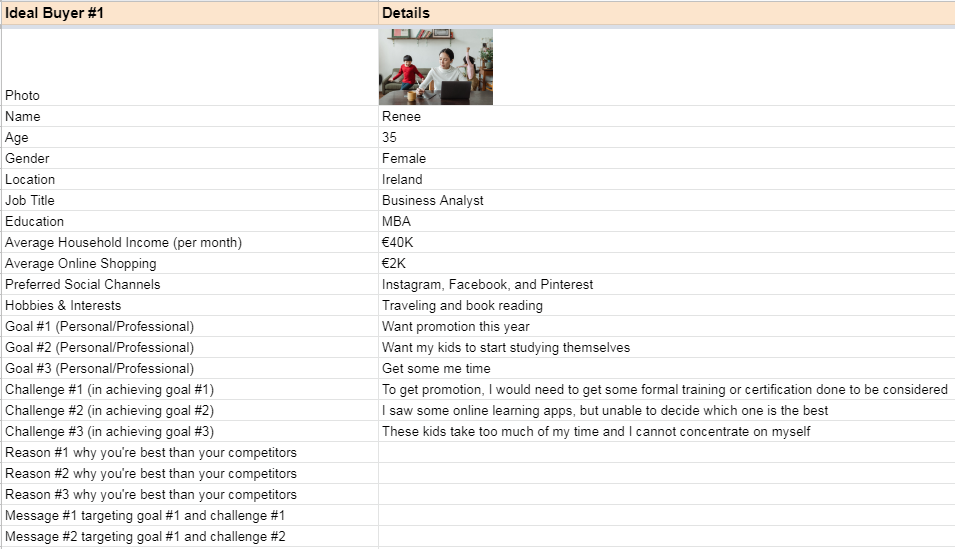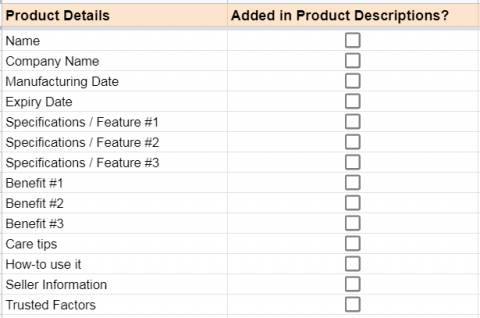A compelling product description can make all the difference in converting visitors into customers. While high-quality images attract attention, the right words persuade potential buyers to make a purchase.
Unfortunately, many businesses overlook the importance of crafting engaging and persuasive product descriptions, often relying on generic manufacturer descriptions or stuffing keywords without considering readability and persuasion.
In this guide, we’ll walk you through 13 powerful tips for writing product descriptions that increase conversions, improve customer engagement, and boost your online store’s SEO. Let’s dive in!
Preparing to Write High-Converting Product Descriptions
1. Document Your Ideal Customers

Before you start writing, it’s essential to know who your target audience is. Understanding their demographics, pain points, preferences, and behaviors will help you craft descriptions that resonate with them.
- Identify Customer Personas: Document key characteristics such as age, interests, income, and common problems they face.
- Create a Google Spreadsheet: Organize customer insights, including frequently asked questions, buying patterns, and language style.
- Tailor Your Copy: If your audience is millennials, use a casual and engaging tone. For B2B buyers, adopt a professional and informative approach.
2. List All Product Information

Having all necessary product details before writing ensures clarity and prevents missing key information.
- Create a Checklist: Include product specifications, benefits, use cases, materials, dimensions, weight, and care instructions.
- Anticipate Customer Questions: What would a buyer need to know before making a purchase? Address those queries in your description.
- Example: If selling a backpack, include capacity, laptop size compatibility, water resistance, and durability features.
How to Write Product Descriptions That Convert
3. Do a Detailed Competitive Analysis
Understanding your competitors’ strategies helps you identify gaps and improve your product descriptions.
- Act Like a Customer: Read competitor descriptions as a potential buyer and note any missing details or unclear points.
- Identify Weaknesses: Are they too generic? Do they lack key features or benefits?
- Use Findings to Improve: Make your descriptions more informative, engaging, and persuasive than your competitors.
4. Begin by Finding Your Transactional Keywords
Optimizing your product descriptions for search engines ensures they reach the right audience.
- Use SEO Tools: Platforms like Semrush, Ahrefs, and Keyword Insights help find relevant transactional keywords.
- Focus on Buyer Intent: Instead of broad terms, target specific keywords such as “buy men’s running shoes online” or “waterproof hiking backpack.”
- Example: Instead of just “beard oil,” use “best beard oil for growth” to attract buyers actively looking to purchase.
5. Craft a Buyer & Keyword-Centric Product Description (Headings + Paragraphs)
A structured product description makes it easy to scan and absorb information.
- Use Keyword-Rich Headings: Example – “Why Choose Our Organic Beard Oil?”
- Write Engaging Paragraphs: Provide details in a conversational yet informative tone.
- Example: Ustraa uses headings like “Strong, Nourishing, and Growth-Boosting” with brief, benefit-focused paragraphs.
6. Benefits vs. Features First – Choose Based on Your Products
Your approach should depend on whether your audience values features or benefits more.
- Feature-Driven Products: Laptops, cameras, and appliances should highlight specifications first.
- Benefit-Driven Products: Skincare, wellness, and lifestyle items should emphasize benefits before features.
- Example: A mobile phone description should lead with specs, while a beard oil should start with benefits like “Nourishes and Strengthens Hair.”
7. Consider the 4Cs of Copywriting
A great product description follows these principles:
- Clarity: Use simple, easy-to-understand language.
- Concise: Keep sentences short and to the point.
- Compelling: Use persuasive language that excites buyers.
- Credible: Avoid exaggerations; provide factual information.
Example: StoreApps uses concise yet powerful descriptions that highlight key benefits without fluff.
8. Add Creative Taglines Wherever Possible
Taglines make your descriptions memorable and engaging.
- Use Humor & Personality: Example – “Tougher Than Your Morning Alarm” for a durable phone case.
- Avoid Keyword Overload: Keep it natural and fun.
- Example: March Tee’s product descriptions often use witty lines like “Wear Your Attitude.”
9. Add a ‘How-to’ Section
A ‘How-to’ section enhances user experience and reduces confusion.
- Explain Usage: Provide step-by-step instructions for complex products.
- Improve Confidence: Buyers feel more assured knowing how to use the product effectively.
- Example: Cult Beauty includes detailed application guides for skincare products.
10. Add Your Brand Story with a Shorter Background
Including a brief brand story helps build trust and emotional connection.
- Keep It Short: A few lines about your brand’s mission or uniqueness.
- Example: Kleen O Wipe’s marketplace description highlights eco-friendly values in two sentences.
11. Use Social Proof to Build Trust and Increase Sales
Customers trust peer reviews more than brand claims.
- Include Testimonials & Ratings: Showcase customer feedback prominently.
- Leverage Social Media Mentions: If influencers or customers talk about your product, feature their posts.
- Example: TripAdvisor’s review integration enhances credibility and boosts conversions.
12. Add a FAQ Section to Persuade Buyers
A FAQ section addresses concerns and removes hesitation.
- Cover Key Questions: Shipping, returns, materials, compatibility, etc.
- Increase Buyer Confidence: Reduce doubts and improve decision-making.
- Example: Lenskart provides clear, well-structured FAQs to answer common queries.
13. Finish with All Basic Yet Essential Information
Ensure no critical details are left out.
- Commonly Overlooked Information: Warranty, certifications, safety guidelines, etc.
- Example: Tech products should include voltage requirements; apparel should specify sizing charts.
FAQs
1. Why is a product description important?
A product description helps potential customers understand what the product does, how it benefits them, and why they should buy it. A well-written description can increase conversions and boost sales.
2. How long should a product description be?
It depends on the product. Simple items may need only 50–100 words, while complex or high-value products may need 200–300 words. Focus on clarity and engagement rather than word count.
3. Should I use bullet points or paragraphs?
Both! Bullet points work well for quick feature highlights, while short paragraphs help tell a story and engage readers.
4. How do I make my descriptions SEO-friendly?
Use relevant keywords naturally, optimize product titles and meta descriptions, and ensure readability. Don’t overuse keywords, as it can negatively impact readability and rankings.
5. What if my product is technical? How do I make it engaging?
Break down complex features into simple, relatable benefits. Use real-world examples and avoid jargon. If necessary, include a “Tech Specs” section separately.
6. Should I write unique descriptions for each product?
Yes! Duplicate content can hurt SEO and make your website seem generic. Even similar products should have slightly different descriptions tailored to their unique aspects.
7. How can I test if my product description is effective?
A/B test different versions of your descriptions to see which converts better. You can also monitor analytics, customer feedback, and sales data.
Conclusion
A well-crafted product description is more than just a collection of words—it’s a sales tool that informs, engages, and converts potential customers. By following these 13 tips, you can create compelling product descriptions that not only improve your conversion rates but also enhance your brand’s credibility and SEO rankings.
An avid blogger, dedicated to boosting brand presence, optimizing SEO, and delivering results in digital marketing. With a keen eye for trends, he’s committed to driving engagement and ROI in the ever-evolving digital landscape. Let’s connect and explore digital possibilities together.




